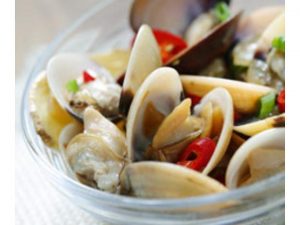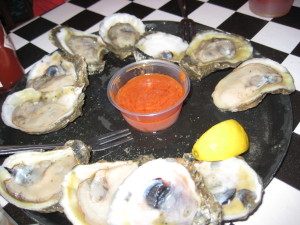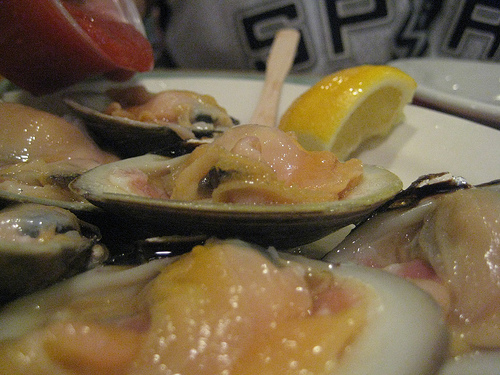By March 2009, 529 diners had become sick with norovirus from raw oysters served by Fat Duck proprietor and pseudo-celebrity, Heston Blumenthal.
From the beginning of the outbreak, Blumenthal blamed others – especially the suppliers – failing to recognize that as owner and chef, he determines what is served, and his business, with consumers who fork over hundreds of pounds for a meal, is based almost entirely on trust.
When health-types noted a number of staff were working while sick, Blumenthal employed the .jpg) but-we-have-a-manual defense, which is nothing more than an invitation for more derision.
but-we-have-a-manual defense, which is nothing more than an invitation for more derision.
When Blumenthal did finally issue an apology on September 25, 2009—seven months after the outbreak was discovered and more than two weeks after the U.K. Health Protection Agency issued a report on the outbreak—it suggested that he viewed an empathetic apology as an admission of guilt.
"I am relieved to be able to finally offer my fullest apologies to all those who were affected by the outbreak at the Fat Duck,” said Blumenthal, “It was extremely frustrating to not be allowed to personally apologise (sic) to my guests until now. It was devastating to me and my whole team, as it was to many of our guests and I wish to invite them all to return to the Fat Duck at their convenience [for a free meal]."
The apology was too late and again failed to accept responsibility for the aspects of the outbreak that were under the chef’s control—namely, acquiring seafood from unsafe sources and allowing sick employees to handle food.
Television presenter Jim Rosenthal, who was sickened, called Blumenthal’s response, “pathetic.”??
“He has basically attempted to re-write the HPA report and its conclusions in his favour. It is pathetic and a complete PR disaster. There isn’t even a hint of apology."
Last week, investigators published the results of the investigation in a peer-reviewed journal, Epidemiology and Infection.
According to the paper, HPA received notification of four individuals who had developed symptoms of diarrhea and vomiting on Feb. 25, 2009, after a local health authority received notification from private consultants late on Feb. 24, 2009. The consultants had apparently been hired by the restaurant in mid-Feb. to review its food safety management system following complaints from diners.
The restaurant voluntarily closed Feb. 22, 2009, but didn’t bother telling health types until late Feb. 24 – and it was the consultants who notified investigators. By this time, 66 complaints of (2).jpg) illness had been received by the restaurant, although no one had contacted the health department (because most people don’t know to contact the health department in suspected foodborne illness cases).
illness had been received by the restaurant, although no one had contacted the health department (because most people don’t know to contact the health department in suspected foodborne illness cases).
Not telling health-types there is an outbreak going on and hoping it will go away reflects serious misgivings with upper – and the upperist – management.
Abstract below.
A large foodborne outbreak of norovirus in diners at a restaurant in England between January and February 2009
Epidemiology and Infection 01.dec.11, FirstView Article : pp 1-7
A. J. Smith, N. McCarthy, L. Saldana, C. Ihekweazu, K. McPhedran, G. K. Adak, M. Iturriza-Gomara, G. Bickler and É. O’Moore
http://journals.cambridge.org/action/displayAbstract?fromPage=online&aid=8446062
SUMMARY
An outbreak of gastroenteritis affected at least 240 persons who had eaten at a gourmet restaurant over a period of 7 weeks in 2009 in England. Epidemiological, microbiological, and environmental studies were conducted. The case-control study demonstrated increased risk of illness in those who ate from a special ‘tasting menu’ and in particular an oyster, passion fruit jelly and lavender dish (odds ratio 7·0, 95% confidence interval 1·1–45·2). Ten diners and six staff members had laboratory-confirmed norovirus infection. Diners were infected with multiple norovirus strains belonging to genogroups I and II, a pattern characteristic of molluscan shellfish-associated outbreaks. The ongoing risk from dining at the restaurant may have been due to persistent contamination of the oyster supply alone or in combination with further spread via infected food handlers or the restaurant environment. Delayed notification of the outbreak to public health authorities may have contributed to outbreak size and duration.
 The City of Busan said nineteen customers at a restaurant have been diagnosed with hepatitis A between mid-June and early-July.
The City of Busan said nineteen customers at a restaurant have been diagnosed with hepatitis A between mid-June and early-July.



.jpg) but-we-have-a-manual defense, which is nothing more than an invitation for more derision.
but-we-have-a-manual defense, which is nothing more than an invitation for more derision.(2).jpg) illness had been received by the restaurant, although no one had contacted the health department (because most people don’t know to contact the health department in suspected foodborne illness cases).
illness had been received by the restaurant, although no one had contacted the health department (because most people don’t know to contact the health department in suspected foodborne illness cases). Syracuse.
Syracuse. Safe food is food that doesn’t make you barf; food that doesn’t make you barf is based on food safety programs validated with microbiological testing.
Safe food is food that doesn’t make you barf; food that doesn’t make you barf is based on food safety programs validated with microbiological testing.  David Theno, who developed the safety program at Jack in the Box before retiring last year, says,
David Theno, who developed the safety program at Jack in the Box before retiring last year, says,